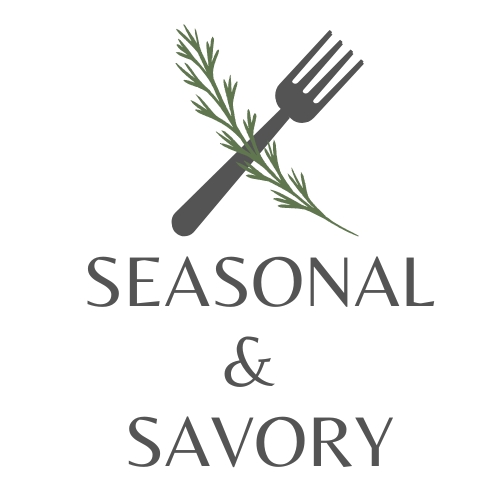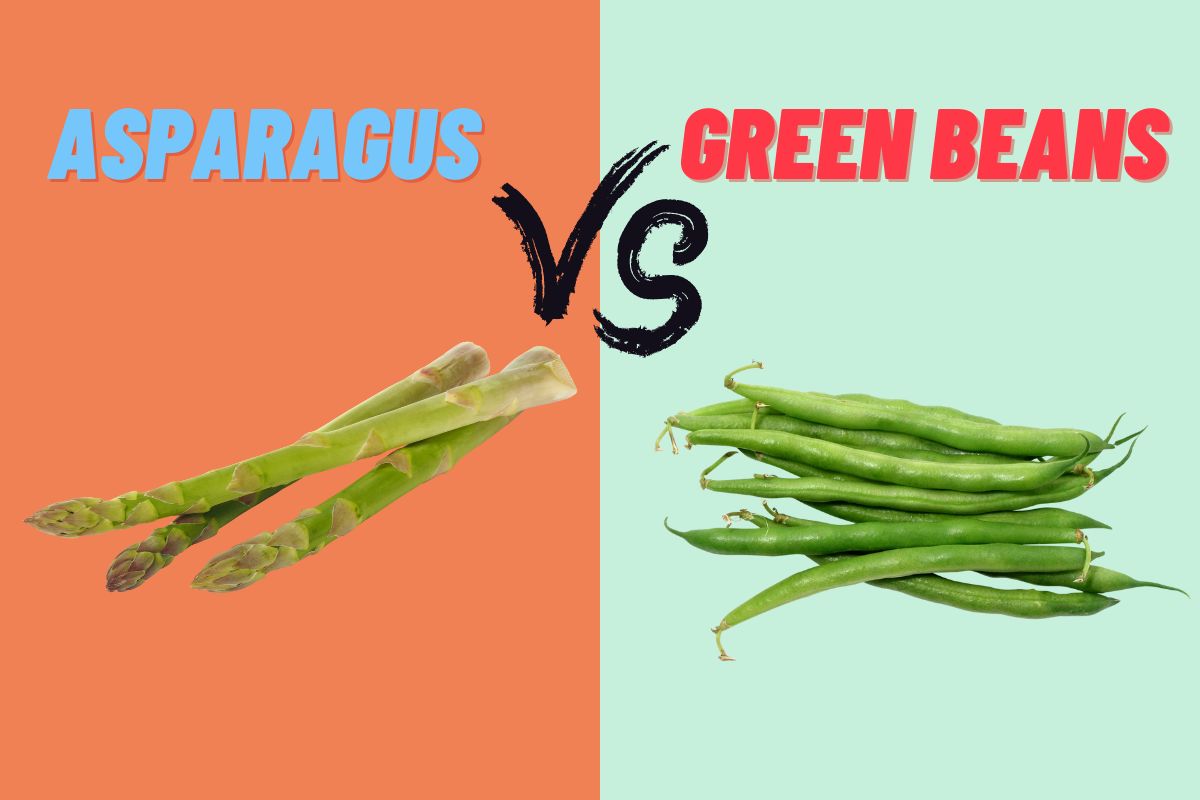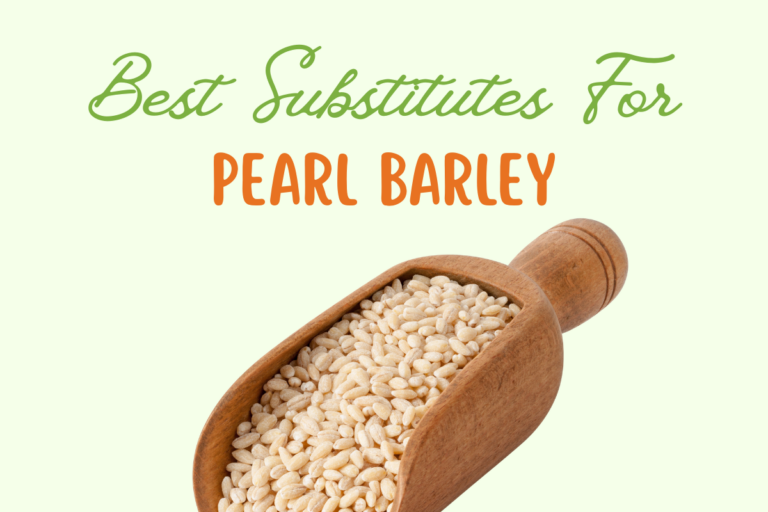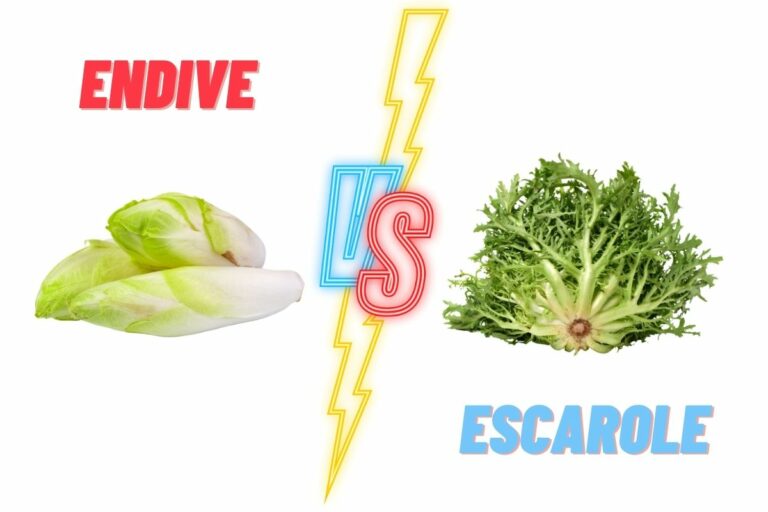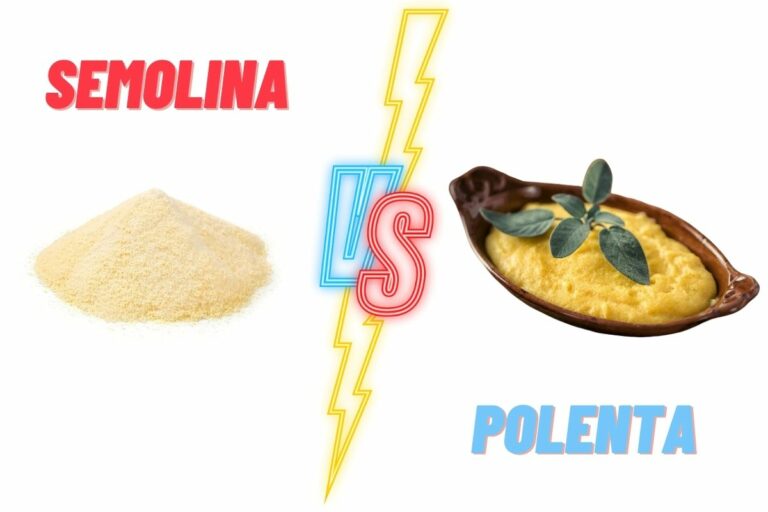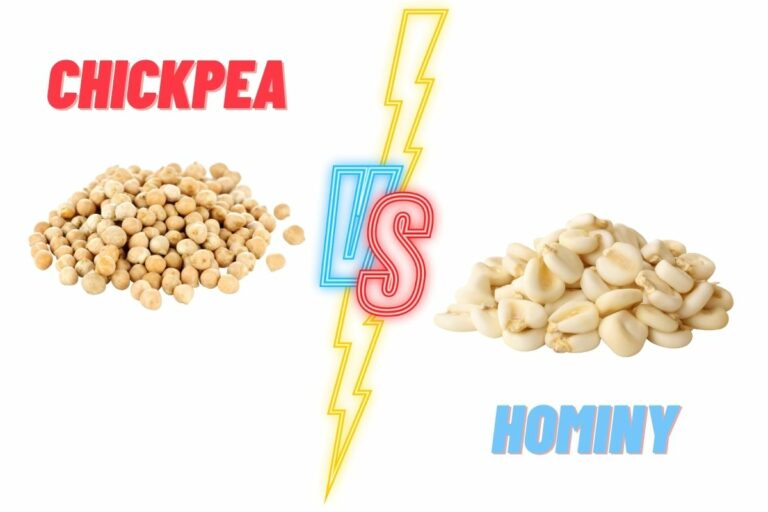Asparagus VS Green Beans
Asparagus and Green beans are two different types of vegetables. Asparagus has a tender and slightly crunchy texture with an earthy flavor, while green beans have a firm and crisp texture with a mild and slightly sweet taste.
Asparagus is rich in fiber, folate, vitamins A and C, and antioxidants. On the other hand, green beans are a good source of vitamins K, C, and A, fiber, and manganese. Asparagus is often roasted, grilled, or steamed and served as a side dish, while green beans can be boiled, stir-fried, or steamed and are used in salads, casseroles, and stews.
Both vegetables are nutritious and offer different health benefits, making them a great addition to a healthy diet.
We know that you want to know more about Asparagus and Green Beans, well worry not because we have made an entire article for you based on this topic.
What Is Asparagus? What Are Their Types?
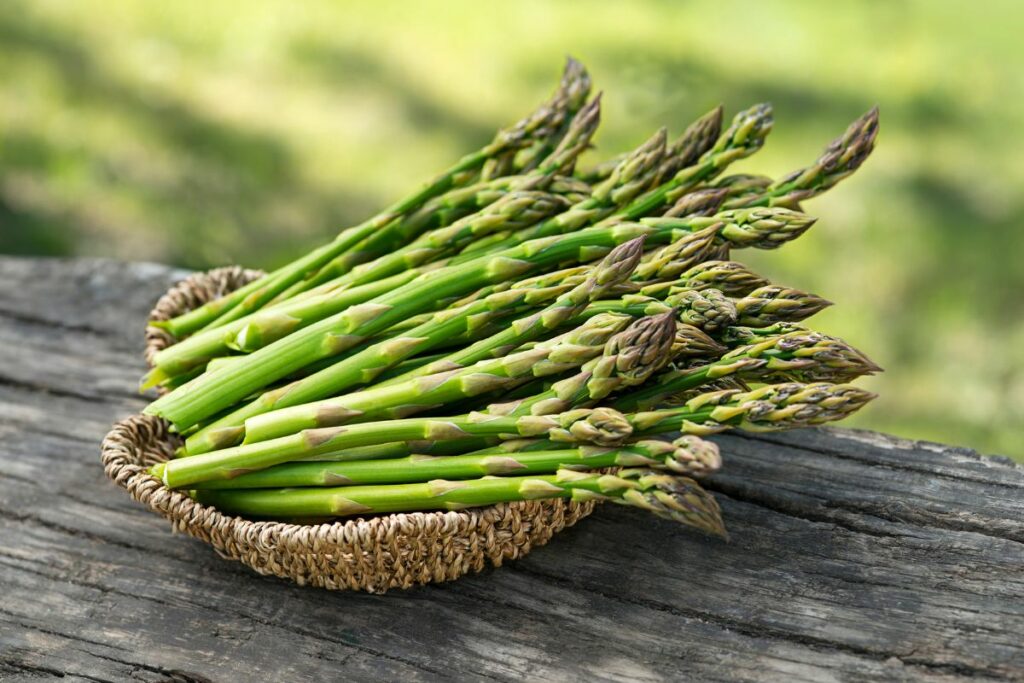
Asparagus is a perennial plant that belongs to the lily family and is native to most parts of Europe, northern Africa, and western Asia. It is a versatile vegetable that is prized for its tender, delicate flavor, and crisp texture.
The edible portion of the asparagus plant is its young shoot, which is harvested before it has a chance to develop into a flower.
There are various types of asparagus with different colors, including green, purple, and white. The green variety is the most common and is usually harvested in the spring.
- Asparagus is a highly nutritious vegetable, containing vitamins A, C, E, and K, as well as folate and potassium. It is also low in calories, making it an ideal food for those who are looking to maintain a healthy weight.
- There are many ways to cook asparagus, including grilling, roasting, and steaming. It can be served as a side dish, or as a main ingredient in a salad or stir-fry.
- Asparagus is also a popular addition to soups, quiches, and frittatas.
- When selecting asparagus, look for spears that are firm, straight, and have compact tips. To store asparagus, wrap the ends in a damp paper towel and place them in the refrigerator, where they will keep for up to four days.
Green Asparagus
Green asparagus is the most common variety of asparagus and is prized for its tender, delicate flavor and crisp texture. It is harvested in the spring and is a highly nutritious vegetable, containing vitamins A, C, E, and K, as well as folate and potassium
- Green asparagus, is versatile and can be cooked in various ways, including grilling, roasting, and steaming.
- It is often served as a side dish or used as a main ingredient in salads, stir-fries, and other dishes.
- When selecting green asparagus, look for spears that are firm, straight, and have compact tips.
- To store, wrap the ends in a damp paper towel and place in the refrigerator for up to four days.
White Asparagus
White asparagus is a type of asparagus that is grown underground, protected from sunlight, which prevents it from turning green. As a result, it has a milder, sweeter flavor compared to green asparagus.
- White asparagus is a popular vegetable in Europe and is often used in dishes such as salads, soups, and stews
- It is also a popular ingredient in asparagus soup and asparagus with hollandaise sauce. White asparagus is typically harvested in the spring and is a nutritious vegetable, containing vitamins A, C, and K, as well as fiber and potassium.
- When selecting white asparagus, look for spears that are straight, plump, and have compact tips.
- Store white asparagus in the refrigerator, where it will keep for up to four days.
Purple Asparagus
Purple asparagus is a unique and visually striking variety of asparagus that is prized for its sweet and nutty flavor. It is a relatively new cultivar and is less widely available compared to green and white asparagus. The purple color of asparagus is due to the presence of anthocyanins, which are powerful antioxidants.
- In addition to its flavor and nutritional benefits, purple asparagus is also prized for its crisp texture and versatility in the kitchen.
- It can be cooked in a variety of ways, including roasting, grilling, and steaming, and is often used in salads, stir-fries, and as a side dish.
- When selecting purple asparagus, look for spears that are firm, straight, and have compact tips.
- Store purple asparagus in the refrigerator for up to four days.
What Are Green Beans?
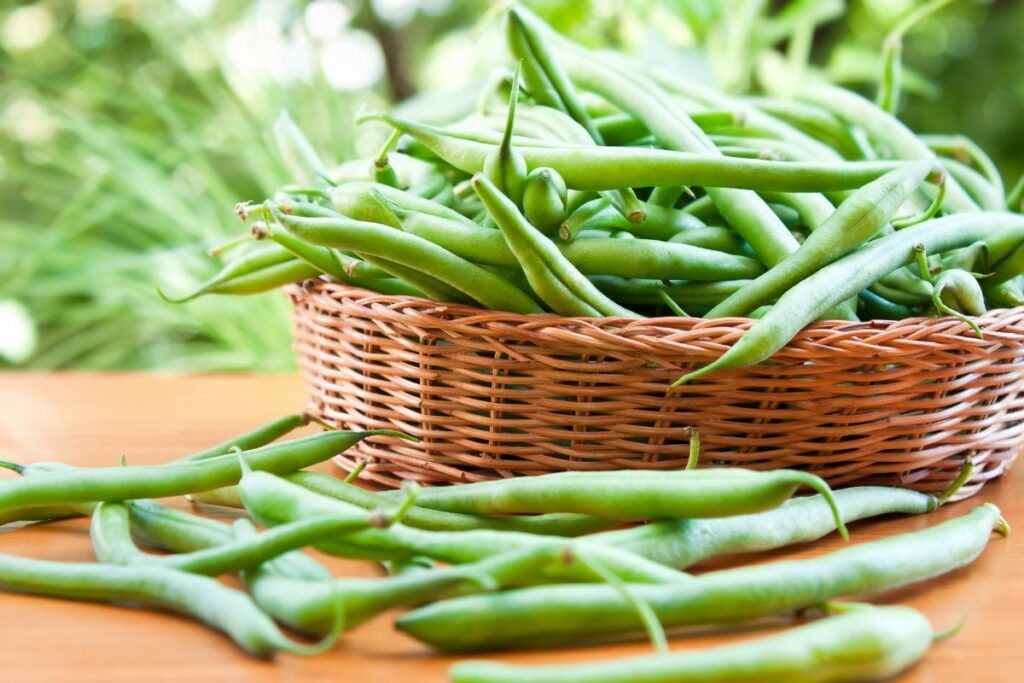
Green beans, also known as snap beans or string beans, are a type of legume that is widely consumed as a vegetable. =
They are the unripe fruit of the common bean plant (Phaseolus vulgaris) and are usually harvested when they are young and tender. Green beans are versatile vegetables that can be eaten raw, cooked, or canned.
- Green beans are an excellent source of vitamins and minerals, including vitamins A and C, fiber, potassium, and iron.
- They are also low in calories, making them an ideal food for people who are trying to maintain a healthy weight.
- Green beans are often used as a side dish, either steamed, boiled, or sautéed, and are a popular ingredient in casseroles and soups.
When selecting green beans, look for pods that are firm, bright green, and have a crisp texture. Avoid beans that are yellow or have wrinkles, as they are likely overripe and will not have a good flavor or texture. To store green beans, place them in a plastic bag in the refrigerator, where they will keep for up to four days.
- Green beans can be seasoned with a variety of herbs and spices, including garlic, lemon, and basil, to add flavor and depth to the dish.
- They are also commonly paired with other ingredients, such as mushrooms, onions, and potatoes, to create a delicious and nutritious meal.
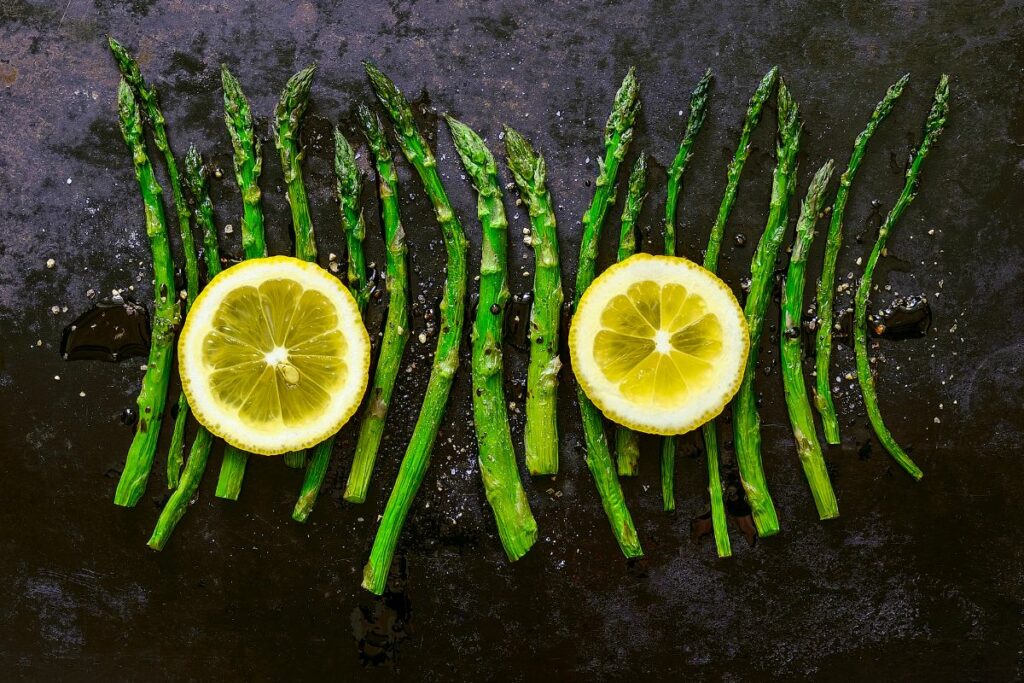
Asparagus VS Green Beans – At A Glance
Let’s have a quick look at the table before we get into the details of the differences between asparagus and green beans
| Difference | Asparagus | Green Beans |
| Taste | Mild and slightly sweet | Mild and slightly sweet |
| Texture | Crisp and slightly fibrous | Soft and crunchy |
| Color | Green to purple | Green |
| Nutrition | High in fiber, vitamins A, C, E and K | High in fiber, vitamins A, C and K |
| Cooking | Best when lightly cooked | Best when fully cooked |
Key Differences Between Asparagus and Green Beans
We have gathered a few key differences for you to decipher the various aspects of Asparagus and Green Beans. They are as follows:
Taste
Asparagus is a popular vegetable known for its distinctive flavor and texture. Its taste can be described as slightly sweet and nutty, with a hint of earthiness. It has a firm yet tender texture that is often described as crunchy, and the flavor can range from slightly bitter to slightly sweet, depending on the variety and preparation method.
Green beans, on the other hand, have a slightly sweet flavor. They are often used in salads, stews, and casseroles, and can be prepared in a variety of ways, including boiling, sautéing, and roasting.
Green beans have a slightly bitter taste, which can be balanced by pairing them with other ingredients, such as herbs and spices.
Texture
Asparagus has a firm yet tender texture that is often described as crunchy. It is a green, spear-shaped vegetable that is typically grilled, roasted, or steamed, which enhances its natural texture and brings out its sweetness. Asparagus is crunchy and crisp when eaten raw and softens slightly when cooked.
On the contrary, green beans have a crisp, crunchy texture. They are typically prepared by boiling, sautéing, or roasting, which enhances their natural crunchiness. Green beans are also slightly softer than asparagus, but still have a crispy and crunchy texture.
Both are delicious and nutritious ingredients that can be used in a variety of dishes, but the choice of which to use will largely depend on the desired texture for the specific dish.
Cooking Methods
Asparagus is typically grilled, roasted, or steamed. Grilling and roasting are popular methods for cooking asparagus as they bring out its natural sweetness and enhance its crunchy texture.
Steaming is another popular method for cooking asparagus as it helps to preserve its delicate flavor and texture.
Green beans, on the other hand, are often prepared by boiling, sautéing, or roasting. Boiling is a common method for cooking green beans as it helps to preserve their crisp texture, while sautéing and roasting are popular methods for adding a caramelized flavor.
Green beans are also sometimes blanched or stir-fried, which helps to preserve their crunchy texture and fresh flavor.
Size
Asparagus is a green, spear-shaped vegetable that varies in size from thin to thick. Thicker asparagus stalks are typically more tender and have a more intense flavor, while thinner asparagus stalks are more delicate and have a sweeter, more delicate flavor.
Green beans, on the other hand, are typically small and thin, ranging in size from just a few centimeters to several inches in length. They are also sometimes referred to as snap beans, because they have a naturally tender and crisp texture that “snaps” when broken.
Availability
Asparagus is grown in many regions around the world, including North America, Europe, and Asia. It is a popular vegetable for home gardening, and it is also widely available at farmers’ markets and in grocery stores.
Green beans, also known as snap beans, are widely grown in many regions, including North America, Europe, and Asia. They are a staple in many gardens, and they are widely available in grocery stores and supermarkets. They are also a popular ingredient in many dishes, and they can be found fresh, canned, or frozen.
Uses
Asparagus and green beans are two versatile and nutritious vegetables that are widely used in many different dishes. Here are some of the most common uses for each:
Asparagus:
- Roasted or grilled as a side dish or as a topping for salads.
- Used in frittatas, omelets, and quiches for added flavor and texture.
- Added to soups, stews, and stir-fry dishes for added nutrition.
- Used as a base for pasta or pizza toppings.
- Pickled or preserved as a snack or appetizer.
Green Beans:
- As a side dish, boiled, steamed, or stir-fried.
- To enhance flavor and nutrients, add to casseroles, stews, and soups.
- Used in salads, sandwiches, and wraps for added crunch and flavor.
- Roasted or grilled as a snack or side dish.
- Pickled or preserved as a snack or appetizer.
Both asparagus and green beans are nutritious and delicious vegetables that can be used in a variety of dishes. Whether used as a side dish, as an ingredient in a main dish, or as a snack, these versatile vegetables are sure to add flavor, nutrition, and texture to any meal.
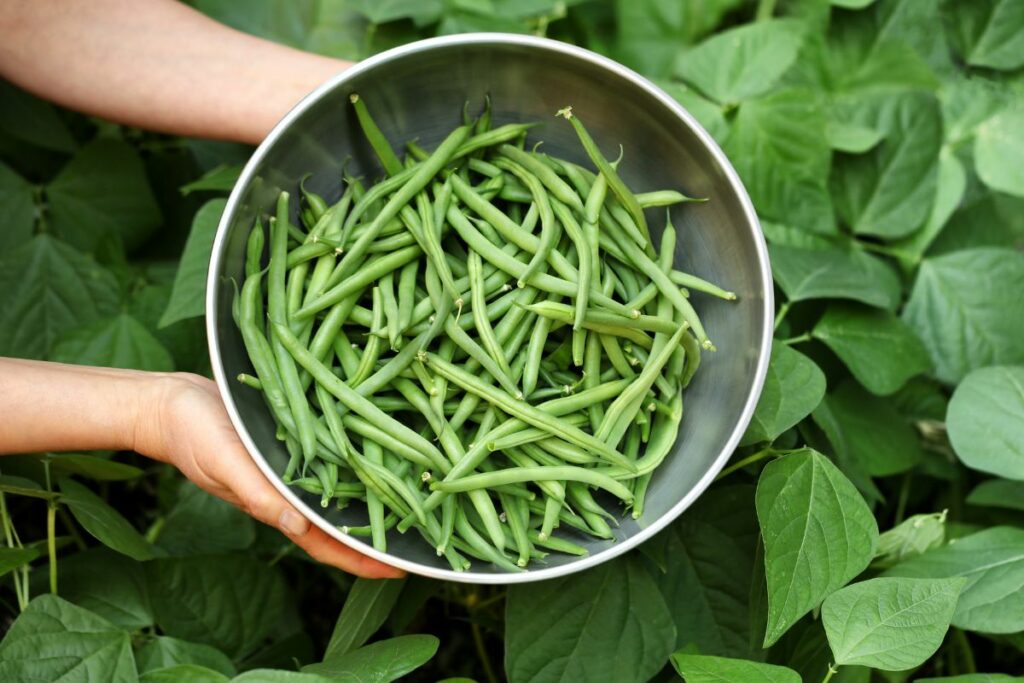
Asparagus VS Green Beans- Nutrition Facts and Health Benefits
Here is the nutrition table for Asparagus and Green Beans
| Nutritious Element | Asparagus | Green Beans |
| Calories | 20 | 34 |
| Protein | 2.2 g | 1.8 g |
| Carbohydrates | 3.8 g | 7.3 g |
| Fiber | 2.1 g | 2.4 g |
| Vitamin A | 12% | 28% |
| Vitamin C | 25% | 15% |
| Vitamin K | 47% | 10% |
Asparagus and green beans are both nutritious vegetables that offer a variety of health benefits. Here are some of the key health benefits for each:
Asparagus:
- High in fiber: Asparagus is a good source of fiber, which can help regulate digestion and support heart health.
- Rich in antioxidants: Asparagus contains antioxidants, including vitamins A and C, which can help protect the body from free radical damage and reduce the risk of certain types of cancer.
- Good for the liver: Asparagus is rich in glutathione, an antioxidant that is important for liver health.
- Supports bone health: Asparagus is a good source of calcium and vitamin K, which are important for maintaining strong bones.
Green Beans:
- Low in calories: Green beans are low in calories, making them a great choice for people who are trying to lose weight.
- Rich in vitamins and minerals: Green beans are rich in vitamins A, C, and K, as well as iron, calcium, and potassium.
- High in fiber: Green beans are a good source of fiber, which can help regulate digestion and support heart health.
- Supports eye health: Green beans contain lutein and zeaxanthin, two important antioxidants that are important for maintaining good vision.
In conclusion, both asparagus and green beans are nutritious vegetables that offer a variety of health benefits. Whether enjoyed on their own or as part of a well-balanced diet, these versatile vegetables can help support overall health and wellness.
Can You Substitute Asparagus For Green Beans?
Yes, asparagus and green beans can be substituted for each other in some recipes, although the flavor and texture may be slightly different.
Asparagus has a more distinct, earthy flavor compared to the milder, sweeter taste of green beans. Asparagus is also firmer and more fibrous in texture, whereas green beans are more tender and have a softer texture.
When substituting asparagus for green beans:
- You may need to adjust the cooking time as asparagus typically takes longer to cook. It’s also important to note that asparagus is typically sold in spears, while green beans are sold whole or trimmed.
- If you’re using asparagus in place of green beans in a recipe that calls for long, whole beans, such as a green bean casserole, you may need to cut the asparagus into bite-sized pieces or trim the ends to achieve a similar size and shape.
In general, substituting asparagus for green beans can work in dishes where the green beans are being used for their texture and crispness, but not necessarily for their flavor.
Storage Tips for Asparagus and Green Beans
Asparagus and green beans are both delicate and perishable vegetables that should be stored properly to maintain their freshness and flavor. Here are some storage tips for each:
Asparagus:
- Wrap the bottom of the asparagus spears in a damp paper towel.
- Place the asparagus in a plastic bag and store it in the refrigerator.
- Use within 2-3 days for best quality.
Green Beans:
- Rinse the green beans and pat them dry.
- Store in a plastic bag in the refrigerator.
- Use within 5-7 days for best quality.
Both asparagus and green beans are highly perishable and should be stored in the coldest part of your refrigerator, such as the vegetable crisper. It’s also important to keep them dry and away from other foods with strong odors, as they are susceptible to absorbing unwanted flavors.
By following these storage tips, you can help extend the shelf life of asparagus and green beans and enjoy their fresh, crisp flavor for longer.
FAQs
Can asparagus be eaten raw?
Yes, asparagus can be eaten raw. It has a crisp texture and a slightly grassy, nutty flavor that is popular in raw preparations such as salads or crudité platters.
Is asparagus gluten-free?
Yes, asparagus is naturally gluten-free. It is a vegetable and does not contain any gluten, making it a safe option for individuals with gluten intolerance or celiac disease.
How long do green beans take to boil?
The boiling time for green beans varies depending on the desired level of tenderness but typically takes 4-6 minutes for fresh green beans and 7-10 minutes for frozen green beans.
Last Thoughts
In conclusion, asparagus, and green beans are both nutritious and versatile vegetables that can add flavor, texture, and color to a variety of dishes.
They differ in flavor, texture, and cooking method, with asparagus having a more distinct, earthy flavor and a firmer texture compared to the milder, sweeter taste and softer texture of green beans. Asparagus is also higher in folate and antioxidants, while green beans are higher in fiber and vitamin K.
